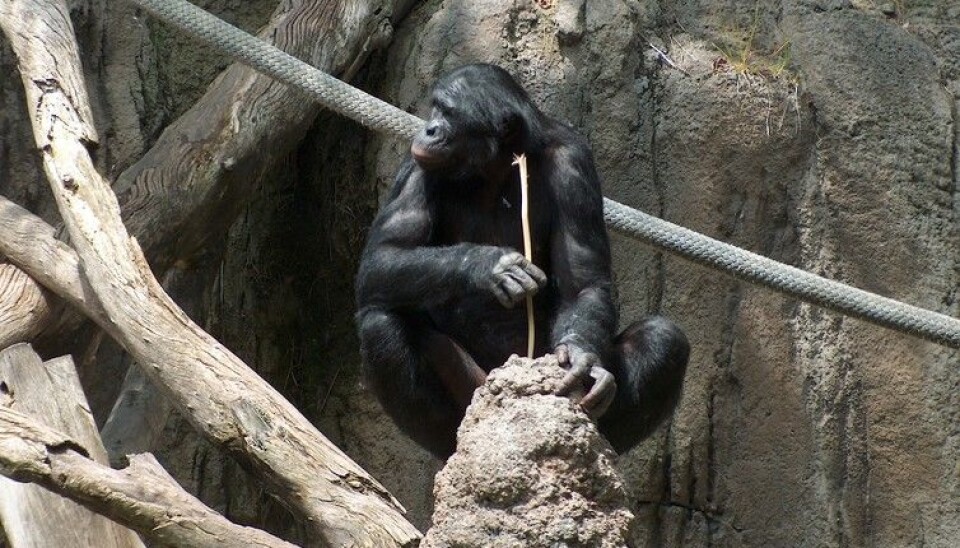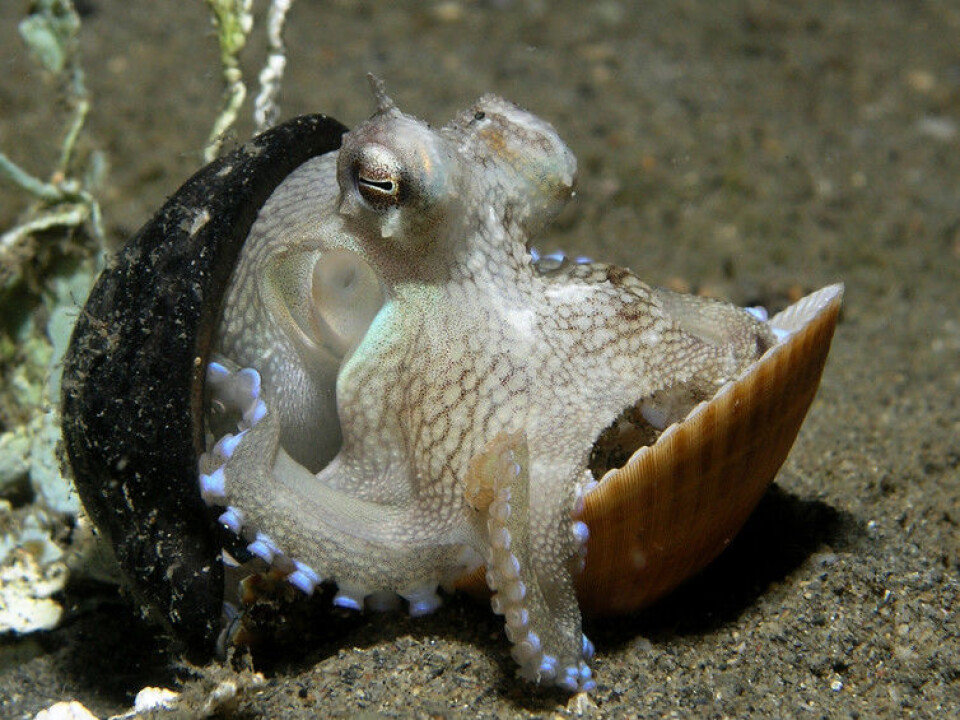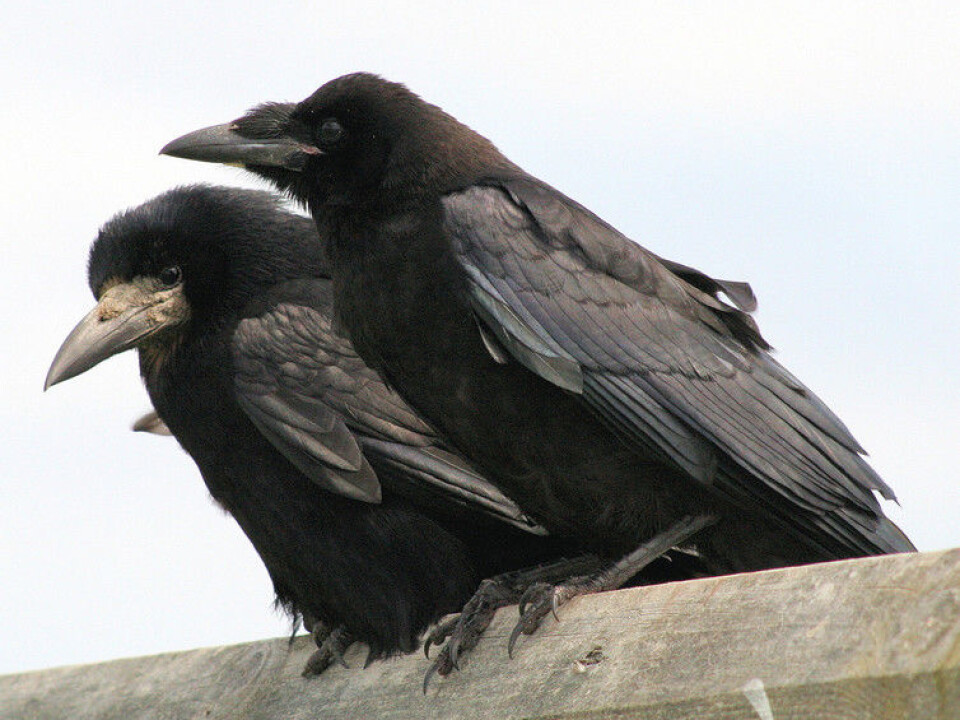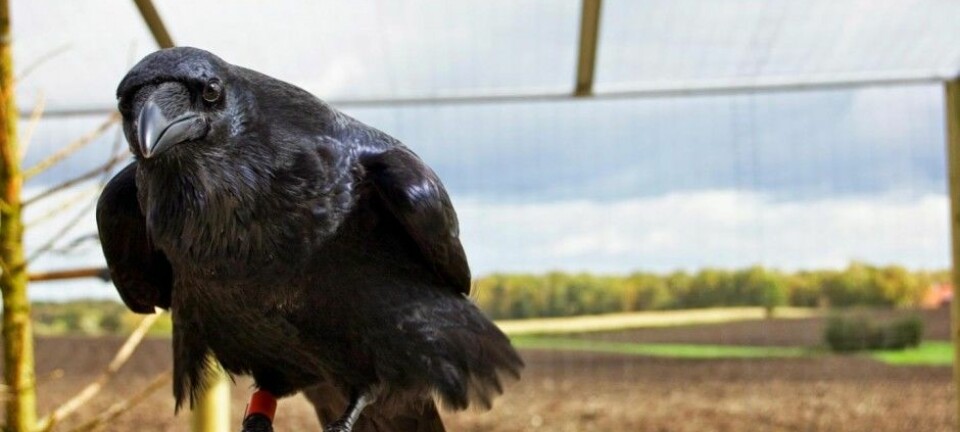
What makes an animal clever? Research shows that intelligence is not just about using tools
The list of animals that use tools keeps growing, from chimps to birds and even octopuses. So is it time that we abandoned "tool use" as a measure of intelligence among species?
Humans set themselves apart from other animals in a number of ways, including our ability to make tools. When the anthropologist Jane Goodall discovered that wild chimpanzees frequently make and use tools, her advisor Louis Leakey famously quipped that “now we must redefine tool, redefine man, or accept chimpanzees as humans”. ![]()
Numerous other species have joined chimpanzees in knocking humans off their pedestal. Boxer crabs use stinging anemones as defensive weapons. American alligators place sticks on top of their snouts to catch egrets during their nesting season, when sticks become a valuable resource. Parrots frequently use a variety of objects to scratch themselves. A jay and a crow have once been observed to use sticks as weapons to jab at each other. Elephant bulls sometimes throw young elephants at fences to create a passage.
The list goes on, and continues to grow with new research. For example, we recently discovered that New Caledonian crows use tools to transport objects and that greater vasa parrots use pebbles to grind calcium powder from seashells for ingestion.
Despite the large variation in which species use tools and how, this behaviour still has special significance. New reports of tool use in animals often feature words such as “intelligent”, “smart” or “clever”. But is this really the case or is it time to abandon tool use as a measure of intelligence?

Termites build extraordinary structures that perfectly fit their needs. Their mounds have chambers that suit specific functions, connecting tunnels that allow large crowds to pass in both directions, and air flow that keeps the nest cool during the day and warm during the night. Designing such structures out of simple materials proves difficult even for human architects, yet it appears effortless for the tiny-brained termite. This is because building behaviour in termites is genetically encoded and often follows a fixed set of rules.
The same line of reasoning can apply to tool use. Simple rules and processes can lead to complex behaviours. Egyptian vultures can’t break ostrich eggs with their beaks, so they throw stones at the eggs to crack them. Young birds are not picky in what tools they use – they also try small stones, soft wood and even dung. They quickly learn what works and what doesn’t, but this doesn’t necessarily mean that the animal understands the physical properties of objects simply because it can successfully use them as tools.
Humans don’t always reason about their tool use either. Or have you often thought about how a ballpoint pen actually works?
Flexibility is key
Finding a single measure of intelligence for species as different as fish and elephants is extremely difficult. But one place to start is by looking at how flexibly animals can solve problems or, in other words, if they can learn more general rules and use these to solve new problems. For example, if an animal usually uses a stone to crack open a nut but there are no stones around, will they choose another heavy, hard object to crack open the nut? This would suggest a more abstract understanding about the type of object needed.

In the case of the Egyptian vulture and many other species, tool use occurs in one very specific context and is relatively inflexible. On the other hand, some species use a range of different tools to solve different problems. Chimpanzees, for example, have a broad toolkit: they use stones to crack nuts, leaf stems to fish for termites, stick tools to probe for honey and leaves to soak up water for drinking.
Similarly, New Caledonian crows make and use several different tools from different materials to probe for insects, and also use tools to explore new and potentially threatening objects.
This type of flexible tool use may allow individuals to innovate new and creative solutions to difficult problems. But even so, tool-using species aren’t necessarily better at solving problems than species that don’t use tools.
Not surprisingly, New Caledonian crows excel in experiments that require them to use tools. What is surprising, however, is the performance of their close relatives that are not natural tool users. For example, researchers have shown that rooks, which do not habitually use tools in the wild, can select tools of an appropriate size and even bend a piece of wire into a hook to retrieve food in experiments when there’s a reward at stake – their problem-solving skills help them work out how to use tools. In the same way, tool-using finches and apes are not necessarily better at problem-solving tasks, whether they involve tools or not, than species of finches and apes which do not typically use tools in the wild.
In addition to using problem-solving tasks, scientists can also compare species by calculating innovation rates, or how often members of different species adapt to new challenges. For example, blue tits invented a creative way to get food by pecking open the caps of milk bottles left on porches – a behaviour which spread quickly across the population.
With continued research on animal behaviour, scientists are constantly forced to reconsider what makes humans unique. Animals continue to surprise us, leading one researcher to ask: are we even smart enough to know how smart animals are?
Humans are clearly not the only animals to use tools for a wide variety of purposes. And while tool use may not always reflect the spark of a bright mind, it still provides a fascinating glimpse into how different species interact with their environments. Case in point: wild chimpanzees use leafy sponges to obtain fermenting sap from palms. Tools to tipple – another sign of intelligence?
This article was originally published on The Conversation. Read the original article.











